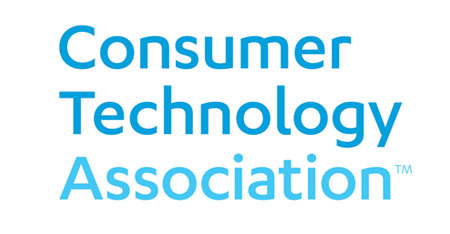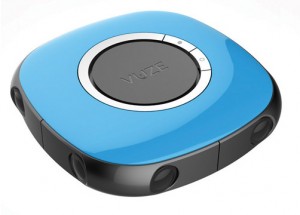
Las Vegas, NV—According to just-released research from the Consumer Technology Association (CTA), rising consumer excitement for the Internet of Things (IoT) and its inherent connectivity, as well as adoption of emerging technology will drive the U.S. consumer technology industry to $292 billion in retail revenues ($228 billion wholesale) in 2017.
The newest edition of CTA’s semiannual report, U.S. Consumer Technology Sales and Forecasts, released prior to CES 2017, reveals that sales of emerging tech products featuring connectivity, such as smart home devices, wearables and 4K Ultra HD televisions will help produce 1.5% year-over-year (YoY) growth in industry revenues. These connectivity products join VR/AR (virtual reality/augmented reality) devices, drones and digital assistant devices to bolster the consumer tech industry.
Connectivity Is a Driving Trend

“Our forecast reinforces our belief that connectivity is going to be one of the driving trends of our time,” said Gary Shapiro, president and CEO, CTA. “More and more consumers are discovering the remarkable benefits connected products deliver. They provide anytime/anywhere access to information, entertainment and also each other. Consumers recognize that connected innovations are changing our lives for the better. They offer us more control and personalization while helping us lead safer, healthier and happier lives.”
The CTA consensus forecast reflects U.S. factory sales-to-dealers for more than 300 consumer tech products.
Emerging Consumer Technology Categories
Among categories tracked by CTA’s forecasts, U.S. sales of connected devices are projected to reach 600 million units in 2017. This represents a record high total and a 5% YoY increase from 2016.

Virtual Reality (VR) and Augmented Reality (AR)
CTA positions this category among the tech sector’s overwhelming leaders in YoY growth in 2017. VR headset unit sales are projected to reach 2.5 million units—a 79% increase over 2016. And CTA says they will hit $660 million in revenue (43%). CTA’s AR/VR Working Group recently finalized a set of industry definitions to better explain the spectrum of experiences in this category.
Drones
Overall drone sales are expected to rise significantly in 2017, topping 3.4 million units (40% increase), and hit the $1 billion in revenue benchmark for the first time (46% increase). The study delineates U.S. drone sales for units below and above 250 grams, the FAA’s division for mandatory drone registration. Drones below 250 grams are expected to reach 2 million units, and drones above 250 grams will sell 1.3 million units.

Smart Home
According to CTA, this category is evolving as “consumers’ most popular means of IoT engagement.” The tech association predicts that the smart home category—including smart thermostats, smart smoke/CO detectors, IP/Wi-Fi cameras, smart locks/doorbells, smart home systems, and smart switches, dimmers and outlets–will hit sales of 29 million units in 2017. This represents a 63% increase over 2016, reaching $3.5 billion (57% increase).
Digital Assistant Devices
These products present an opportunity to understand how home tech products will integrate artificial intelligence (IA) over time. The 2017 unit sales projections for voice-controlled, stand-alone digital assistant devices with a cloud-based operating system, such as Amazon’s Echo and Google Home, are projected to reach 4.5 million units (52% increase) and $608 million in revenue (36% increase).
4K Ultrahigh-Definition
4K UHD TVs are one of the industry’s fastest growing segments. They are driven in part by next-generation technologies such as high dynamic range (HDR) and wide color gamut. Growth of this market “significantly outpaces the transition to high-definition television, with just three years since introduction. Cumulative sales of 4K UHD displays are forecast to hit 18.6 million units; sales of HDTVs reached 4.2 million units in their first three years on the market,” according to the study.
CTA projects shipments of 4K UHD displays will reach 15.6 million units in 2017 (51% increase) and also earn $14.6 billion in revenue (38% increase).
Wearables
Spurred by the popularity of fitness activity trackers, the total wearables market in 2017 is projected to reach 48 million unit sales. This 14% increase translates into revenue of $5.5 billion, or just a 3% increase.
“2016 was an important year of transition—with potentially game-changing products, including VR headsets and digital assistant devices, gaining steam within mass consumer markets. I expect 2017 to be a year where many of these emerging tech categories find their footing and really take off,” said Shawn DuBravac, PhD, chief economist, CTA.
“We’ve had more progress in voice-activated digital assistants in the last 30 months than in the first 30 years. Word-recognition accuracy has improved from nearly zero percent in the 1990s to 75% in 2013 to about 95% today. This has enabled these devices to enjoy immense consumer adoption. While still in a period of massive experimentation, we’re increasingly moving away from what is technologically possible and focusing on what is technologically meaningful.”
“Continued revenue growth in the U.S. consumer technology sector is critical to overall U.S. economic growth,” added Shapiro. “Our sector supports more than 15 million jobs across the nation, directly, indirectly and induced. And it accounts for more than 10% of total U.S. GDP, per a recent CTA economic study.”
Consumer Technology Association
CTA publishes the U.S. Consumer Technology Sales and Forecasts twice a year, in January and July, reporting U.S. factory sales to dealers.
The Consumer Technology Association (CTA) is the trade association representing the $292 billion U.S. consumer technology industry. More than 2,200 companies are CTA members. Eighty percent are small businesses as well as start-ups, others are among the world’s best-known brands. They all take advantage of the benefits of CTA membership. These include policy advocacy, market research, technical education, industry promotion, standards development and also the fostering of business and strategic relationships. The Consumer Technology Association also owns and produces CES. Additionally, profits from CES are reinvested into CTA’s industry services. cta.tech





